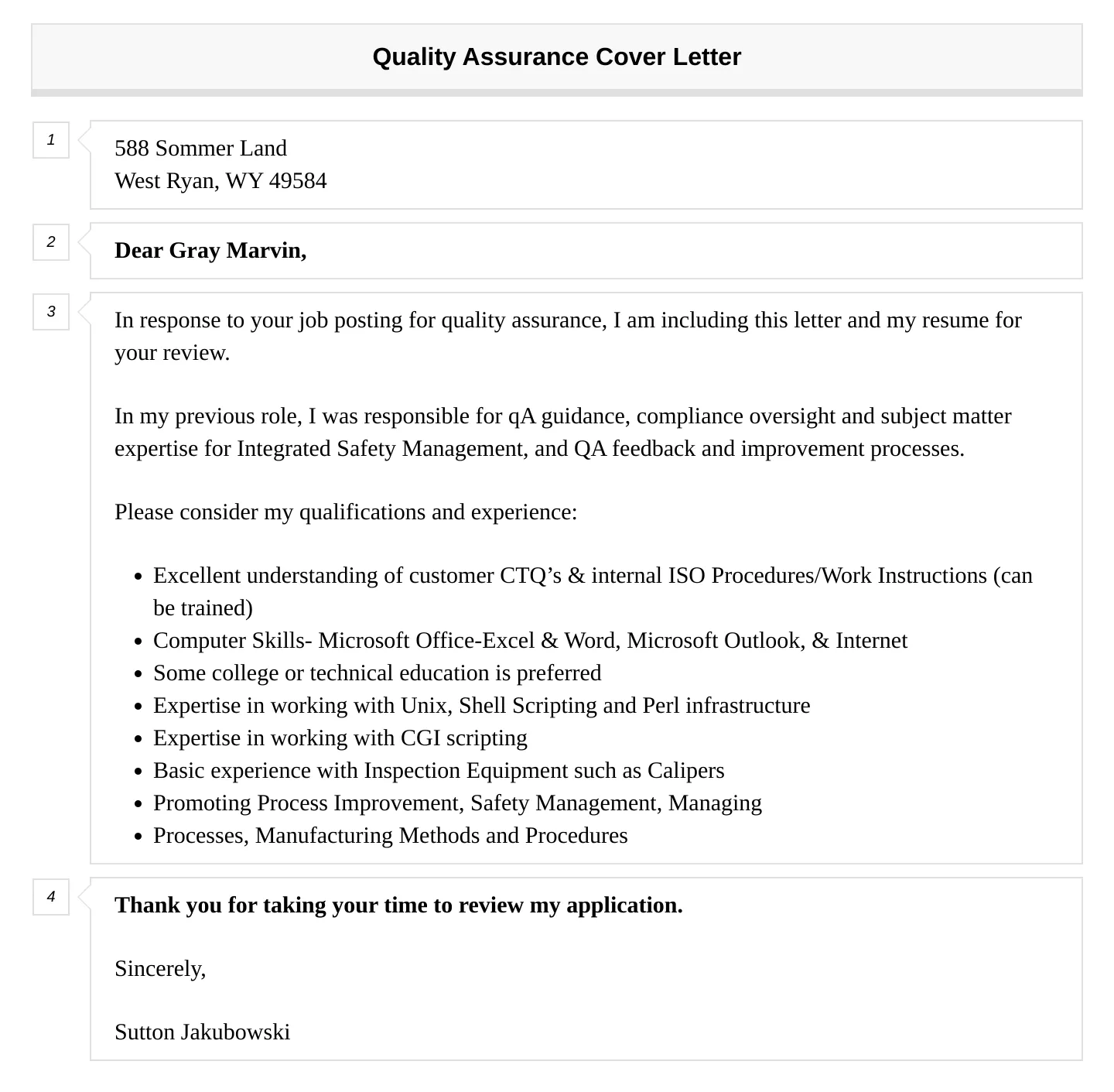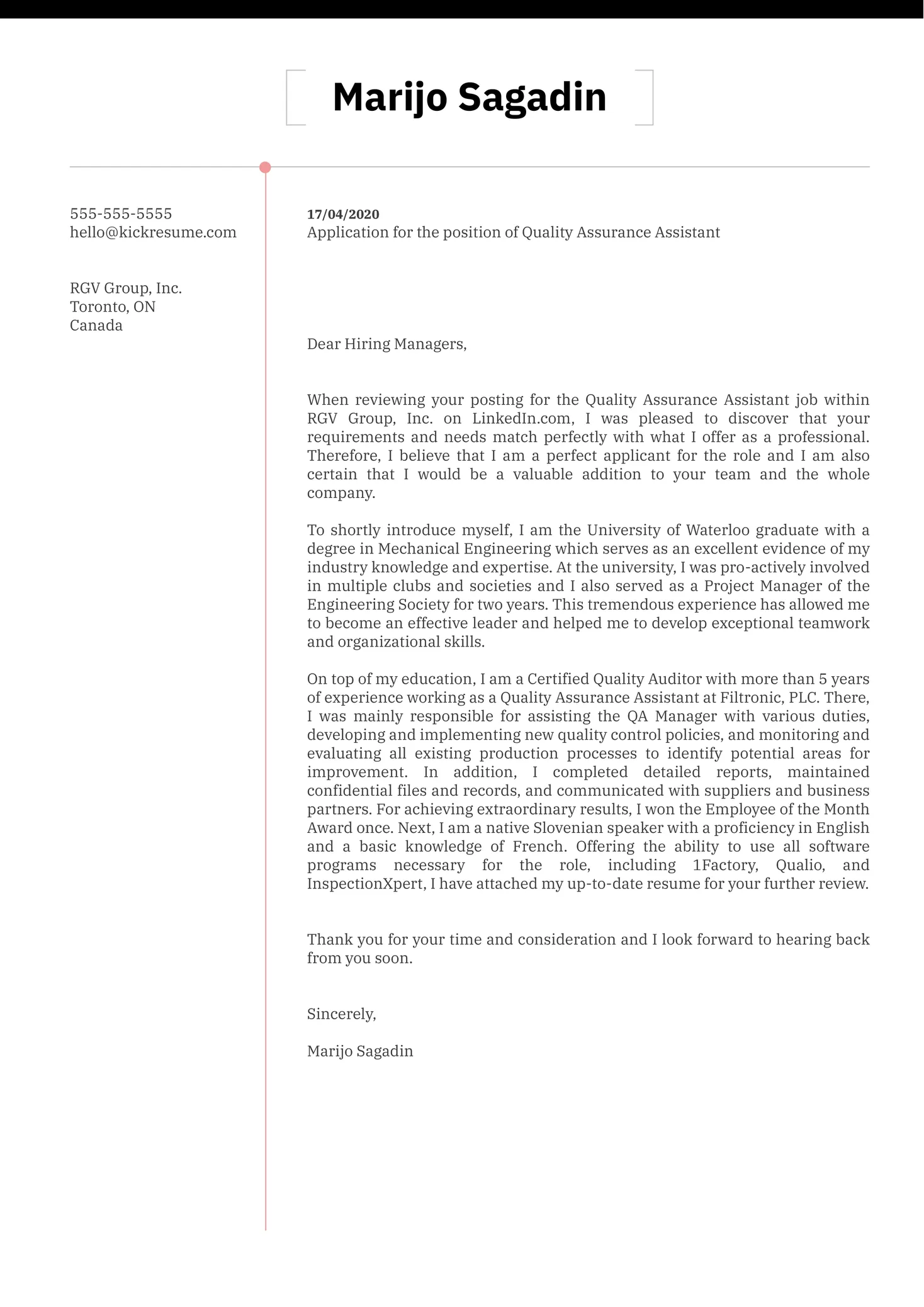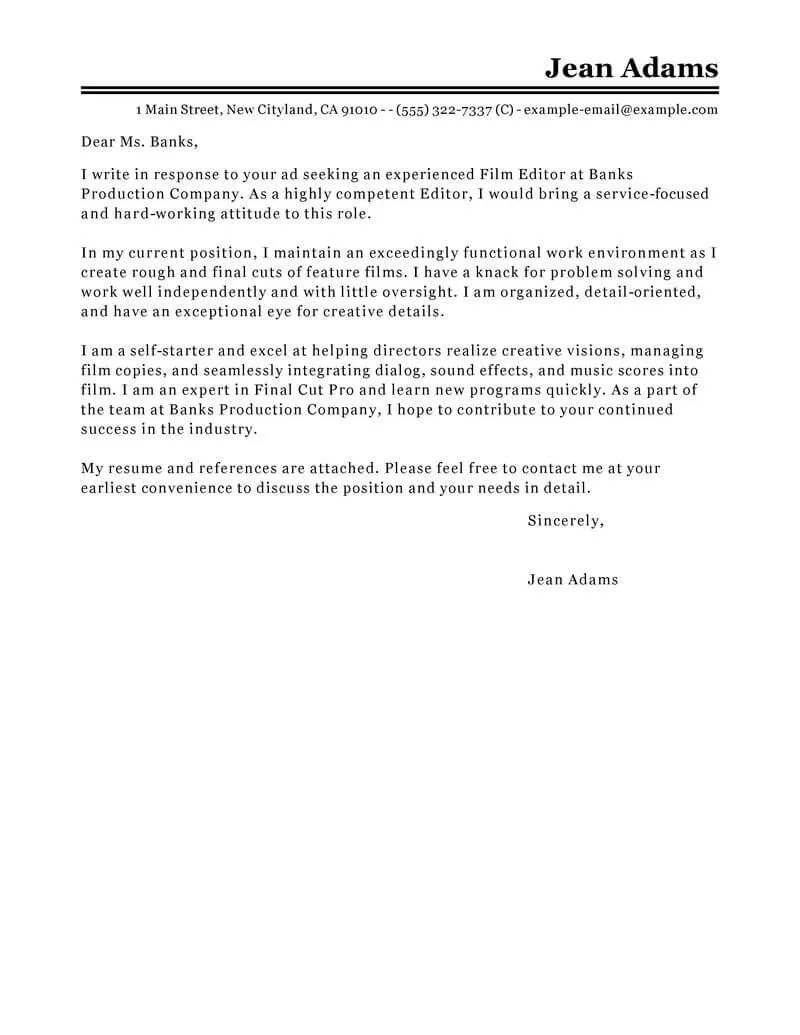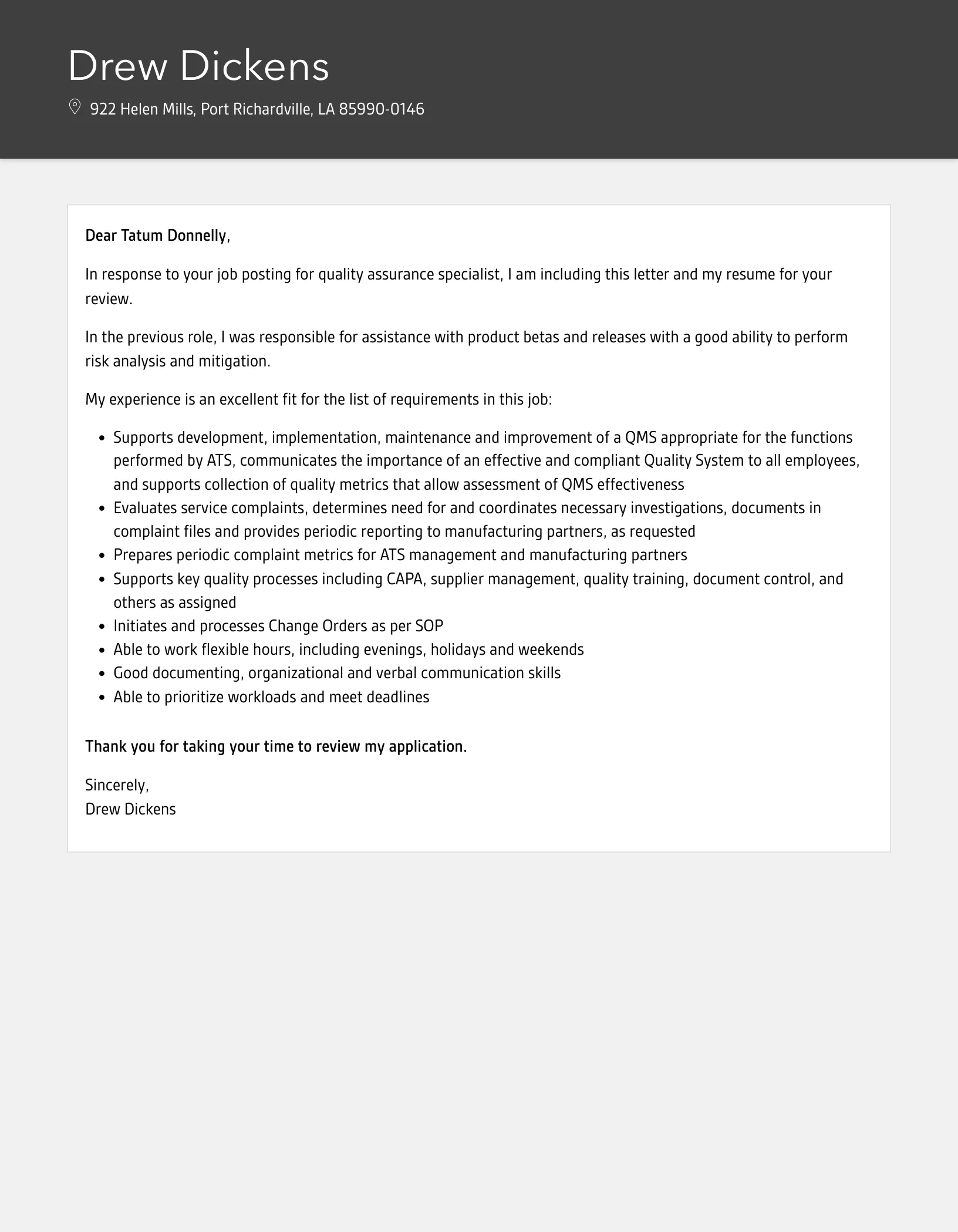Understanding the Importance of a QA Cover Letter
A quality assurance (QA) cover letter is your first introduction to a potential employer, and it’s a crucial part of your job application. It’s not just a formality; it’s your chance to showcase your personality, highlight your skills, and explain why you’re the perfect fit for the role. A well-crafted cover letter can set you apart from other candidates and significantly increase your chances of landing an interview. It provides an opportunity to demonstrate your understanding of the company, the role, and the specific requirements, supplementing your resume with context and personality. In the competitive field of QA, where attention to detail and clear communication are paramount, your cover letter should be a testament to these abilities, proving your attention to detail and your commitment to excellence, right from the start.
Key Components of a Quality Assurance Cover Letter
A stellar QA cover letter is more than just a rehash of your resume; it’s a strategic document designed to capture the hiring manager’s attention and convince them you’re the ideal candidate. The best cover letters have several key components that work together to create a compelling narrative of your suitability for the role. You’ll want to make sure your contact information and formatting is clear and easily readable. It should then be customized to the job description, which will require research into the company. You’ll want to highlight the most relevant skills and experience. Lastly, you’ll want to close strongly with a clear call to action.
Header & Contact Information

Your header should be at the top of your cover letter and include your full name, phone number, email address, and optionally, your LinkedIn profile URL. Ensure that the contact information is accurate and professional. The header should be clean and easy to read, with a font that is consistent with the rest of the document. Using a professional-looking email address is also essential. This section’s format should be concise and well-organized so that the recruiter can quickly and easily find your contact information.
Applicant Tracking System (ATS) Optimization
Many companies use Applicant Tracking Systems (ATS) to manage applications. To ensure your cover letter gets seen, optimize it for ATS compatibility. Use keywords from the job description throughout your letter. These systems scan for specific words, so using the same language as the job posting can improve your chances of being selected. Keep your formatting simple, avoiding complex elements like tables or images, as they can sometimes cause the ATS to misread your document. Save your cover letter in a common format like .docx or .pdf, and make sure the file name includes your name and the job title, making it easily identifiable for the recruiter.
Tailoring the Cover Letter
Generic cover letters are easy to spot and are often discarded. Tailor each cover letter to the specific job and company you’re applying to. Research the company and the role; understand their values, mission, and the specific requirements of the QA position. Address the hiring manager by name if possible, as this demonstrates you’ve taken the time to research. Highlight the skills and experiences most relevant to the job description, using the same keywords they use. This will show the hiring manager that you understand their needs and are a good fit for the role. This level of customization indicates genuine interest and a proactive approach, greatly increasing the impact of your application.
Opening Paragraph

Your opening paragraph is your first opportunity to make a strong impression. Start with a compelling hook, such as expressing your enthusiasm for the role or highlighting a key achievement. Clearly state the position you’re applying for and how you learned about it. Mentioning a specific project, skill, or aspect of the company that excites you shows you’ve done your research and are genuinely interested. Make it concise and attention-grabbing to encourage the reader to continue reading. For instance, you could start with a brief anecdote about a quality assurance challenge you successfully resolved, immediately demonstrating your skills and experience in the field. This immediate engagement is key to piquing the hiring manager’s interest and setting the tone for the rest of your letter.
Highlighting Your QA Skills
Your cover letter should be a showcase of your most relevant QA skills. Avoid simply listing skills; instead, demonstrate how you’ve applied those skills in previous roles. Use examples to illustrate your proficiency. This section should directly address the requirements outlined in the job description. This means you’ll have to customize your cover letter. Focus on your skills and explain how they’ve made you successful. You can use any number of different skills. Make sure to highlight the most important ones to the company.
Technical Proficiency
Showcase your technical skills relevant to QA. Mention specific tools, technologies, and programming languages you are proficient in. Mention experience with automation tools like Selenium, JUnit, or TestNG. If the role requires knowledge of a specific platform or software, be sure to highlight your expertise. Don’t just list the technologies; describe how you’ve used them to solve problems and improve quality. Mentioning experience with specific frameworks, such as Agile or DevOps, can also be beneficial. Tailor this section to match the job description by emphasizing the tools and technologies that are most relevant to the position.
Problem-Solving Abilities

QA professionals are essentially problem-solvers. Highlight your abilities to identify, analyze, and resolve issues. Provide specific examples of situations where you’ve successfully troubleshooted complex problems. Explain your approach to debugging and your ability to think critically to find solutions. Discuss your experience with different types of testing, such as functional, performance, and security testing. Mention the methodologies you’ve used to identify and report bugs and how you’ve collaborated with development teams to fix them. These examples are the foundation of a good cover letter.
Communication and Teamwork
QA is a collaborative process, so effective communication and teamwork are essential skills. Demonstrate your ability to communicate clearly and concisely, both verbally and in writing. Describe your experience working with developers, project managers, and other stakeholders. Give examples of how you’ve effectively communicated test results, bug reports, and recommendations for improvement. Highlight your ability to work within a team, contribute to team goals, and handle feedback constructively. Emphasize your ability to collaborate effectively across different departments, to ensure projects run smoothly.
Showcasing Your Experience
Use your cover letter to highlight your relevant experience. Focus on the experiences that best align with the job requirements. Use the STAR method (Situation, Task, Action, Result) to provide concrete examples of your accomplishments. Describe the context of the situation, the task you faced, the actions you took, and the results you achieved. This method helps to make your experiences more impactful and easier for the reader to understand. Quantify your achievements whenever possible to demonstrate the impact of your work. Show how you’ve improved quality, reduced costs, or increased efficiency.
Quantifying Achievements

Quantifiable results are essential. Instead of saying you “improved testing processes,” provide metrics, such as “reduced bug detection time by 20%.” Use numbers to demonstrate the value you brought to previous roles. For example, you might mention that you “implemented a new testing framework that reduced regression testing time by 30%” or “identified and resolved critical bugs that prevented project delays.” Quantifying your achievements provides concrete evidence of your abilities and impact. Such details make your accomplishments more credible and showcase your effectiveness, so be sure to include them.
Using Action Verbs
Start your bullet points and descriptions with action verbs. Action verbs make your cover letter more dynamic and engaging. Use strong verbs such as “developed,” “implemented,” “analyzed,” “managed,” “improved,” “tested,” and “resolved.” This technique helps you concisely and effectively describe your contributions and the results of your actions. For instance, instead of writing “responsible for testing,” write “conducted comprehensive testing of software applications.” Action verbs create a sense of activity and focus, making your cover letter more impactful.
Writing a Strong Closing
Your closing paragraph should summarize your interest in the position and reiterate your qualifications. Reiterate your enthusiasm for the opportunity and briefly summarize why you are a good fit for the role. Express your desire to discuss your qualifications further in an interview. Keep it concise and professional. Make it clear that you are eager to contribute to the company’s QA efforts. Your closing paragraph should leave the hiring manager with a lasting positive impression.
Call to Action

Include a clear call to action. Invite the hiring manager to contact you for an interview. Make it easy for them to take the next step. Express your availability and enthusiasm for the opportunity to discuss your application further. This active approach encourages the recruiter to take immediate action and increases your chances of progressing to the next stage of the hiring process. This demonstrates your confidence and your eagerness to join the company.
Proofreading and Editing
Proofreading is essential. Before submitting your cover letter, carefully proofread it for any grammatical errors, spelling mistakes, or typos. Ensure the formatting is consistent and professional. It’s always a good idea to have someone else review your cover letter. Ask a friend, colleague, or career advisor to read it and provide feedback. Fresh eyes can often catch mistakes you might have missed. Pay attention to the overall tone and ensure it reflects your professional brand. Make sure it’s clear and concise. Double-check all contact information to ensure accuracy. A polished, error-free cover letter demonstrates your attention to detail and commitment to quality – essential traits for a QA professional.
